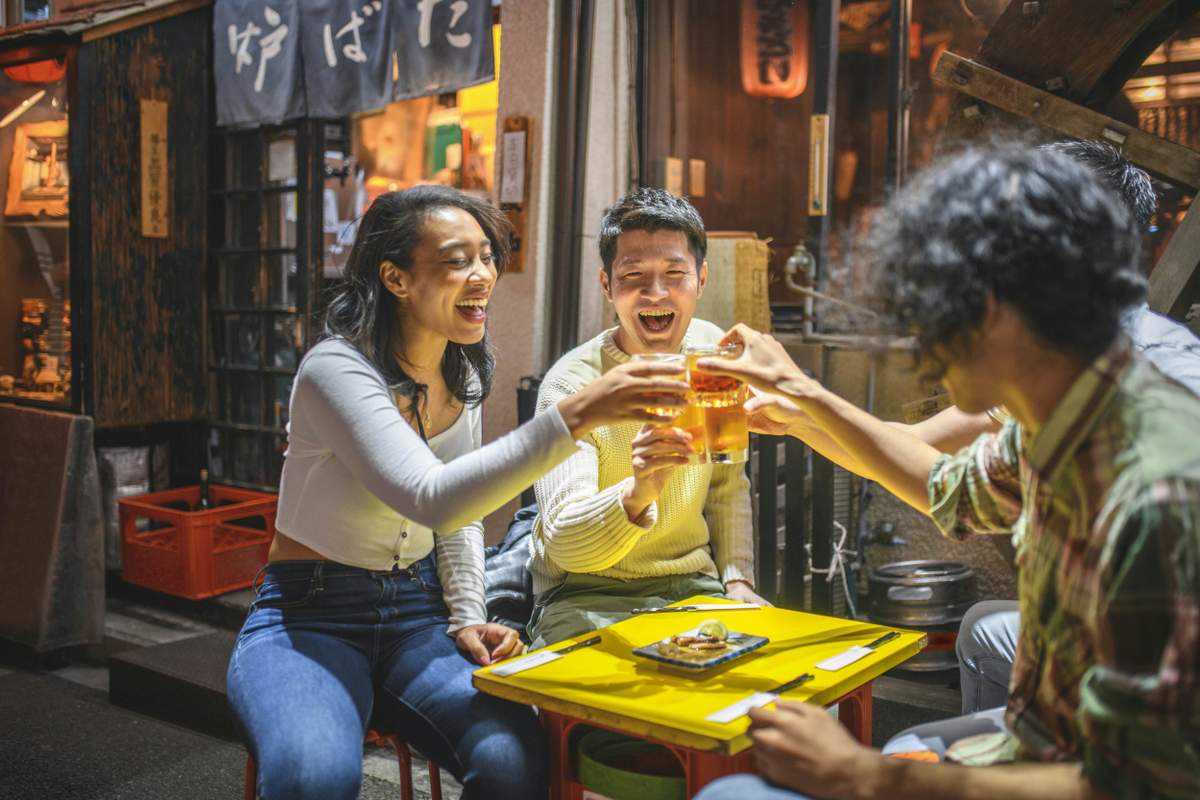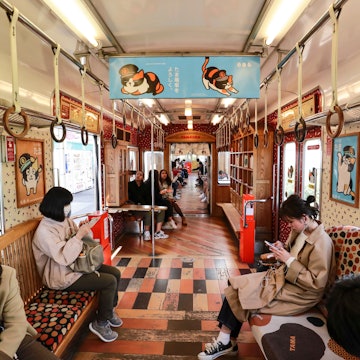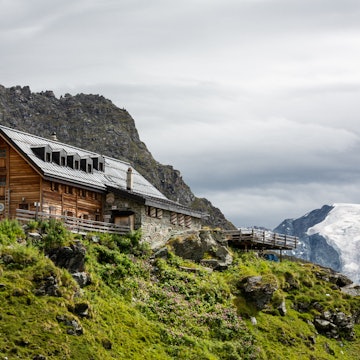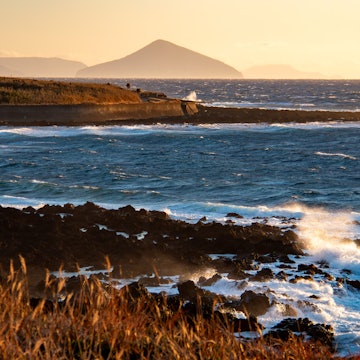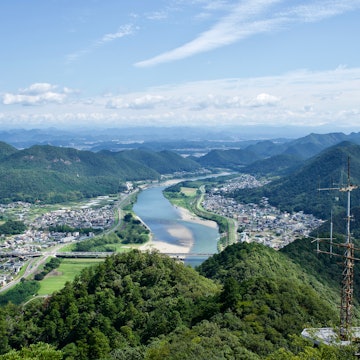
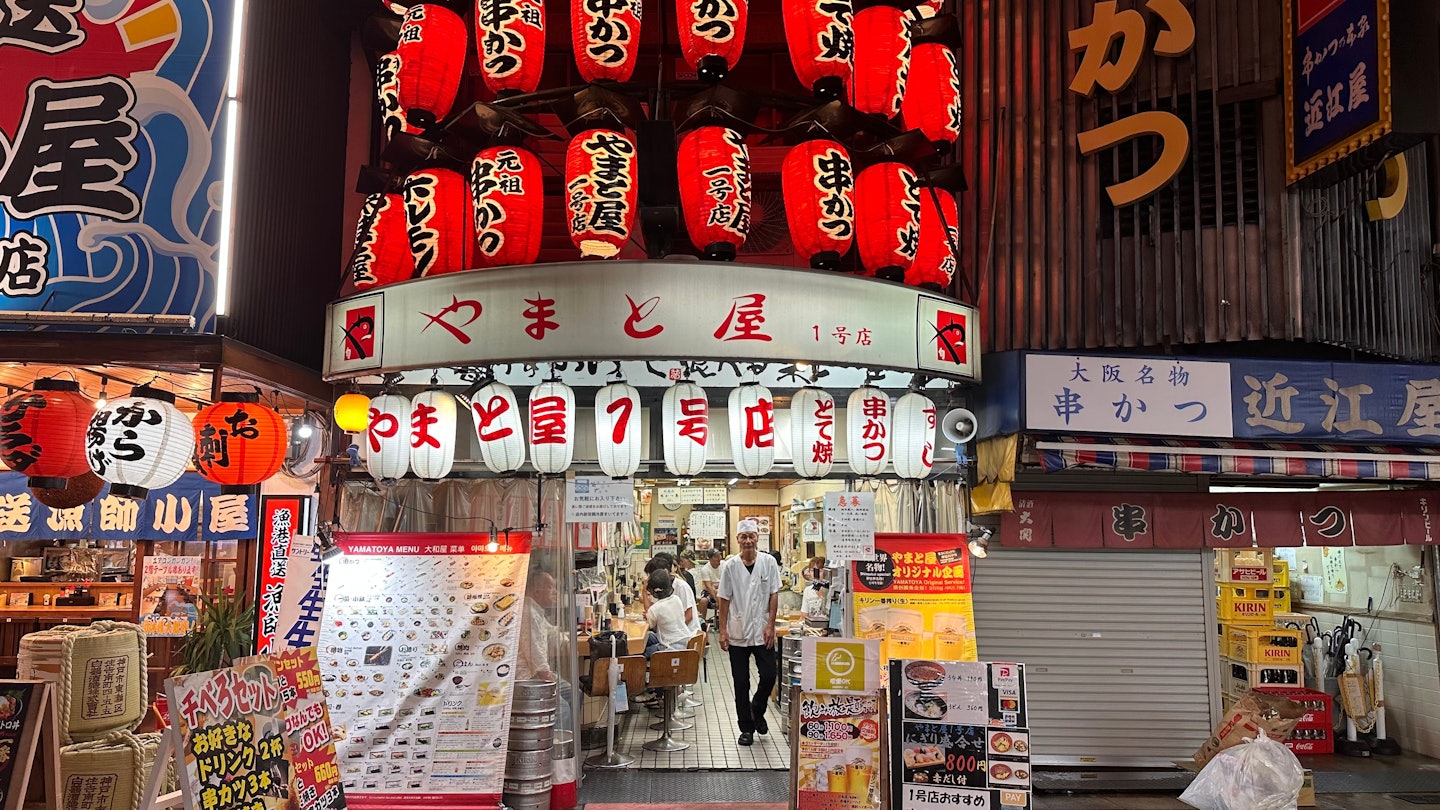
The entrance of a traditional restaurant in Osaka, Japan. Besides the Obvious/Shutterstock
Japan has a reputation as an etiquette-bound place that can be intimidating for first-time visitors.
Yet seasoned visitors will tell you that the traditions here are no more formal or constricting than in many other destinations around the world. Moreover, most locals are more than willing to help out or give foreign travelers a pass for any perceived faux pas.
As with just about anything in life, expectation management is key as you navigate the unwritten rules of Japan and discover all this storied country has to offer. Put your mind at ease with these top tips for smooth traveling.

1. Book accommodation in advance (and arrive at the right time)
In a pinch, you could probably get a room at a basic business hotel without a reservation – but why risk it? Top accommodations can book up weeks or even months in advance, so it’s best to plan ahead.
Particularly busy travel periods include the first week of January, cherry blossom season (late March through April, depending on the destination), “Golden Week” (April 29 to May 5) and August.
Keep in mind that smaller inns or ryokan (traditional Japanese inns) often have fixed check-in times outside of which staff won’t be present, and rooms won’t be made up. Coordinate your arrival time in advance.
2. Plan on packing light – and right
Since hotel rooms in Japan tend to be small, especially in cities, there is little room for large suitcases. These can also be a pain to wrangle on public transport; some shinkansen (high-speed trains) even require you to reserve space for oversized luggage (this is free to do in advance, but you’ll have to pay a penalty aboard the train if you don’t). Packing on the lighter side is always a good idea – but itʻs especially advisable for Japan.
Note that religious sites such as Buddhist temples and Shintō shrines don’t have dress codes. High-end restaurants, bars and clubs sometimes do, but that usually just means no sleeveless shirts or sandals on men. Keep in mind that you might find yourself sitting on the floor when dining out, which can be uncomfortable in short (or tight) clothing.
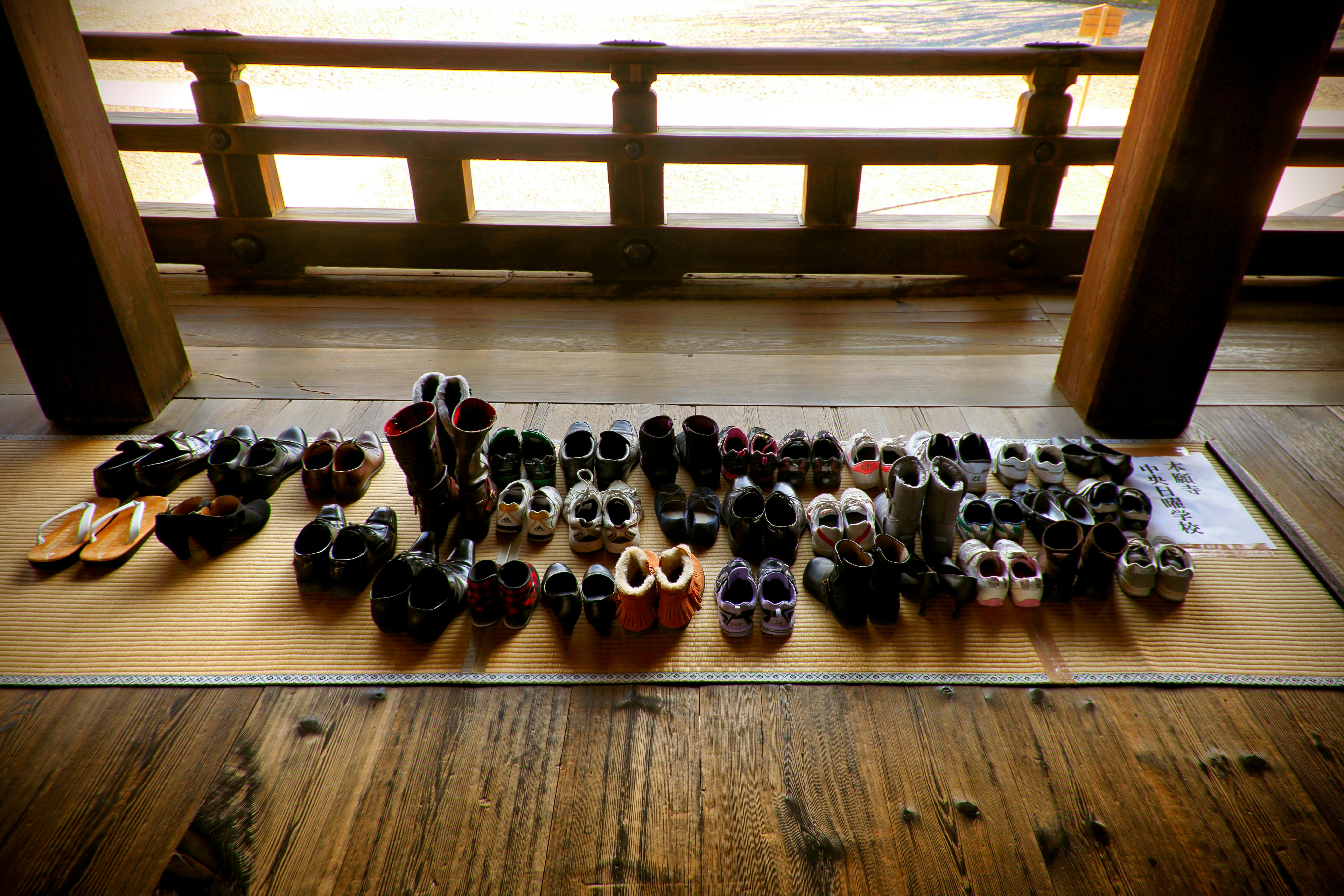
3. Bring shoes you can easily slip on and off
Comfortable walking shoes are a must for any visit to Japan. Since you’ll also likely have to take your shoes off frequently at religious sites, traditional inns and some restaurants, you’ll thank yourself later if you pack shoes that are easy to slip on and off.
Since you’ll be slipping into a pair of shared slippers when you take your own shoes off, many visitors prefer to wear socks when they explore.
4. Buy a data-heavy SIM card – or use an eSim
The street-address system in Japan is notoriously difficult to navigate – even for locals – so smartphones with navigation apps have been a real boon for travelers. These apps tend to use a lot of data, so count on stocking up when you arrive.
Getting connected in Japan is easy. You can buy a data-loaded SIM card at the airport or at many shops in cities and towns – or, if your phone allows it, count on the ease of an eSIM to find your way around.


5. Come prepared for the weather
Summers in Japan are hot and humid, which can mean a real risk of heatstroke; always carry water with you during the warmest months. A folding umbrella with UV blocking is also useful – and does double duty in case of a sudden shower. Late June is the start of the annual rainy season, when it can rain without end for days; this can last a few weeks or through most of July.
Rains, as well as punishing winds, are likely again during typhoon season, which runs from September through October (and earlier in Okinawa). Typhoons can cause serious travel disruption, so monitor any emerging storm situation with the Japan Meteorological Agency’s weather warnings, which are available in English. Winters can get chilly, and Tōhoku and Hokkaidō up north can get huge dumps of snow.
Japan’s ubiquitous convenience stores are handy for weather-related necessities like umbrellas, hats, cooling wipes and pocket warmers.
6. Make sure to carry cash...
In rural Japan and at older family-run businesses in cities, credit cards may not be accepted. (It’s wise to assume you’ll need to pay cash at country ryokan and smaller restaurants and shops, for example.) These days, branches of the big convenience-store chains have ATMs that accept international cards.
To pay as the Japanese do, place your cash or card in the small tray at the register rather than handing either to the cashier.

7. ...but don’t worry about tipping
Though tour guides who regularly take foreign tourists around might expect a bit extra, Japan has no tradition of tipping, and an attempt to add to your bill will more often than not fluster or embarrass staff.
In lieu of tipping, some bars and restaurants will charge a flat service fee, usually around ¥300 to ¥500 (US$2 to US$3.33) per person, while izakayas often send out a small, unrequested appetizer called otoshi, tacking a small fee onto the bill for the privilege. Other establishments, typically fancy ones, will automatically add a 10% service charge to the bill.
8. Eating in public is generally a no-no in Japan
In Japan, it’s considered bad form to eat in public, especially while walking. Exceptions include the shinkansen and other reserved-seat limited-express trains, where it is customary to eat a bentō (boxed meal) on board; at festivals or market streets with food vendors; on a picnic; and (of course) when eating ice cream. It’s also okay to take sips from a resealable beverage container, like a water bottle.
9. Track your trash carefully
Any visitor to Japan from Europe or North America will quickly notice how few public garbage cans are present on streets in Japan. This reflects a culture of respect for others and public spaces: people tend to take their garbage back to their home or workplace, and generally refrain from littering. On any trip to Japan, expect to carry any on-the-go trash (such as wrappers and empty bottles) with you until you return to your accommodation, or to dispose of it the point of purchase.

10. Learn the art of queueing
The Japanese are big on queues, forming neat lines everywhere from checkout counters to train platforms. (Note that in the latter case, after the train doors open, it’s everyone for themselves when it comes to scoring a seat.)
11. Stand to the left (or to the right)
In Japan, always ride to one side of the escalator – though which side depends on just where you are. In Kanto and points eastward, it’s to the left; in Kansai and points westward, it’s to the right. (The dividing line is somewhere just west of Nagoya.)
Incidentally, train operators indicate they prefer passengers to stand on both sides of station escalators and refrain from walking up altogether – even if commuters have so far shrugged at these guidelines.
12. Note when the last train leaves
City subways run until 1am at the very latest. If you miss the last train for the night, the alternative is to catch a taxi, which can be expensive.

13. Avoid the morning commute in Tokyo
For Tokyo natives, every morning commute is a contact sport. On weekdays from 7:30am to 9am, millions squeeze into trains across the city, sometimes helped along by station staff who make sure everyone’s packed in.
Shinjuku Station, the busiest in the world, sees an average of more than 3.5 million commuters daily; there are more than 200 exits leading in and out of the complex.
14. Embrace the bidet toilet
Called “washlets,” Japan’s high-tech, electronic bidet-toilets will wash and dry your delicate parts with the touch of a button. (Don’t worry about any language barrier; the pictograms on the buttons are easy to understand).
Other toilet customs in Japan might throw you for a loop. Motion-sensor-activated sound machines are intended to conceal, um, sensitive noises. Also expect dedicated toilet slippers in shoes-off establishments. Note that since towels and hand dryers are often lacking, follow local protocol and carry a small cloth with you when on the go.
15. Know what to do in an earthquake or tsunami
Japan is one of the most seismically active places on the planet. While strong earthquakes are rare, minor temblors happen all the time. If one occurs during your time here, stay calm and take your cue from those around you. Head under a table or stand in a doorway if the shaking picks up; strict building codes generally keep harm to a minimum.
Rarer but more dangerous tsunami can follow a significant quake. Should this occur, listen for tsunami warnings and, if you’re near the coast, get to higher ground – fast.

16. A few words of Japanese will get you far
English is widely spoken in cities and around major tourist attractions in Japan. Yet in rural areas, it can be hit or miss. It’s never a bad idea to learn a few Japanese words and phrases that will come in handy when dining out.
• ōmori (large portion, often free at ramen stalls)
• okawari (refill)
• mochikaeri (takeaway)
• tennai de (eat-in)
• onegai shimasu (please). Follow up any of your orders or requests with this; for example, if you want tea, say, “O-cha onegai shimasu."
• sumimasen (excuse me)
• arigatō gozaimasu (thank you). Because it’s a bit of a mouthful, it’s tempting to shorten it to simply arigatō. Think of it as the difference between “thank you” and “thanks” – and opt for the more polite arigatō gozaimasu.
• toire (toilet; pronounced “to-ee-rey”)






